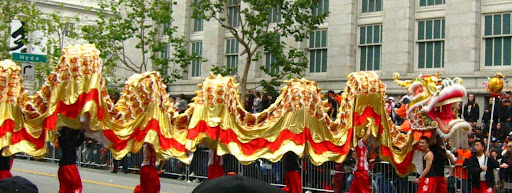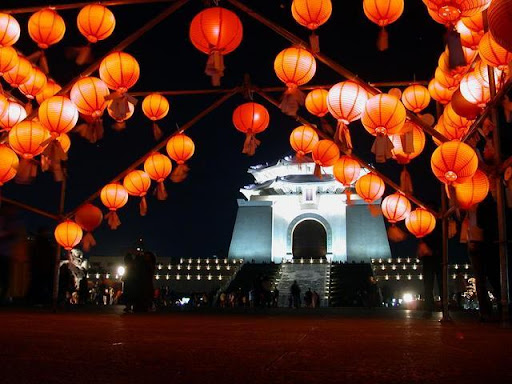Lunar New Year, also sometimes known as Chinese New Year or Spring Festival, is a 2-week celebration that celebrates luck, health, and reuniting with family. While it’s very widely celebrated, many kids might not know a lot about it.
Appreciating other cultures (or learning more about their own) leads to a greater appreciation for the awesome diversity found in our communities, builds empathy, and is just plain fun!
Read below how to teach your kids about the fun traditions, superstitions, and history behind these annual celebrations with our simple script and fun questions.
You’ve probably heard of Lunar New Year!
Many cities have parades and some schools teach students about it. Ask your child how much they know about this centuries-old celebration of fortune, family and health.
This year, Lunar New Year kicks off on January 22nd, 2023. The 15-day celebration honors ancestors and brings communities together with parades, activities, and customs believed to bring luck, prosperity, and happiness.
It can vary based on local traditions, but festivities usually start with a family feast (called a reunion dinner) full of traditional foods, and end with a Lantern Festival. Family is a very important part of the holiday, so hundreds of millions of people typically travel to celebrate in their hometowns.
Are Lunar New Year and Chinese New Year the same thing?
You can tell your kids:
“‘Lunar New Year’ is a more general term for the celebration of the new year that starts on the first new moon of the lunisolar calendar (that’s a calendar that’s measured by cycles of the moon and our rotation around the sun). It’s celebrated in China, as well as lots of other east Asian countries like South Korea, Vietnam (where it’s known as Tết), and Singapore.”
“‘Chinese New Year’ is an American version of the holiday, and is the most commonly celebrated Lunar New Year in the U.S. It was popularized by Asian-Americans whose families originally came from China, but is enjoyed by everyone, especially in Chinatowns of different U.S. cities, as a celebration of Chinese culture and traditions.”
“Of course in China they just call it ‘New Year’—or more commonly, the Spring Festival.”
Share the original story behind Lunar New Year.
“There are reasons tied to the calendar for celebrating the Spring Festival, but there are traditional stories about how it started, too. The most common legend says…
Centuries ago, a monster named Nian terrorized Chinese villagers so much that a wise monk advised everyone to use loud noises, burn bamboo torches, and hang red lanterns in doorways to scare him off. It worked! The day Nian was finally defeated became the start of the Lunar New Year.”
Each year, the festivities honor a different animal.
There are 12 animals in the Chinese zodiac, and they “take turns” representing the year—so every 12 years the cycle repeats. Ask your kids if they can guess what the 12 animals are!
(HINT: People in China would pick animals that lived near them—so that rules out certain critters like giraffes and zebras)
(ANSWER: Rat, Ox, Tiger, Rabbit, Dragon, Snake, Horse, Goat, Monkey, Rooster, Dog, Pig)
Each animal symbolizes certain character traits in people born that year, as well as what we can expect during the year to come.
This year is particularly special because people celebrating the Lunar New Year will welcome the Year of the Rabbit OR the Year of Cat, depending on which cultural traditions they follow. In most parts of East Asia, the new year will be the Year of the Rabbit, while many Vietnamese people will ring in the Year of the Cat.
One reason people believe Vietnamese culture celebrates this new year as the Year of the Cat is that the branch of the calendar corresponding to “rabbit” is pronounced “mao” in Mandarin Chinese and “meo” in Vietnamese, which sounds like the Vietnamese word for “cat.” However, it could also be explained by the legends of how the zodiac animals were originally chosen.
According to PBS, in the Chinese version of the legend, the cat and the rat were riding across a river on an ox when the rat pushed the cat into the water so that the cat arrived last and was disqualified. The rabbit was crossing the river by hopping on stones, and on its last jump it landed on a floating log that quickly carried it to the shore—so the rabbit finished fourth, and became the fourth animal in the zodiac. However, in the Vietnamese version (which doesn’t include a rabbit at all), the cat could swim after being pushed off the ox and ended up arriving fourth instead of being disqualified.
What do people do to celebrate?
These activities are all designed to usher in good luck and fortune throughout the year:

Dragon Parade — During the parades, groups of people stand under enormous, lifesize dragon puppets holding poles to prop them up. As they walk along the parade route, they move the poles to mimic the moves of a dragon.
The Lion Dance – This is when two people wear an elaborate lion costume and move their bodies to mimic the moves of a lion.
Red Envelope Exchange – Tradition calls for filling red envelopes with money in an even amount for luck, then handing them out as presents to children or unmarried people.
Firecrackers – The loud noise of firecrackers is believed to help ward off evil spirits. Confetti cannons are used in places where fireworks aren’t allowed.
There are lots of interesting superstitions and taboos around the holiday!
Ask your child—which of these would be hardest to stick to? Which would be most fun?
- Don’t cry or argue during the Spring Festival, or you set a bad tone for the year
- Don’t cut your hair on New Year’s Day, or you could sever your ties to family and good fortune
- Avoid doing laundry or washing your hair—it washes away wealth
- No black or white clothes (they’re unlucky)—red clothes attract luck
- Don’t sweep, or you’ll sweep away good fortune
- Don’t take out the garbage—it dumps the good luck from your house
Simple, fun ways your family can celebrate Lunar New Year at home:

Make dragon puppets and have a puppet show. First, accordion-fold a strip of red paper for the body. Draw and cut out a dragon head and tail (these free printables help make it easy) and glue them to each end. Tape popsicle sticks near the head and tail so you can make them dance!
Eat oranges or plant peonies. These fruits and flowers are believed to bring good luck and are often part of the Lunar New Year festivities.
Make fun fireworks. Decorate an empty toilet paper tube with bright colors, glitter, or shiny stickers. Glue strips of red tissue paper coming out of one end to represent fire coming out of the rocket. Fill the tube with candy—a Chinese tradition to make your year sweet! Artsy Crafty Mama has 15 other great firework crafts you can make with everyday items.
Wear red. It’s the primary shade of the Lunar New Year, a good-luck color said to symbolize scare away evil and usher in good.
Create paper lanterns. A Lantern Festival, where lit paper lanterns are hung or paraded around, marks the last day of many Lunar New Year celebrations. Find a DIY tutorial online to make your own with paper, tissue, small jars, or other items around the house.






